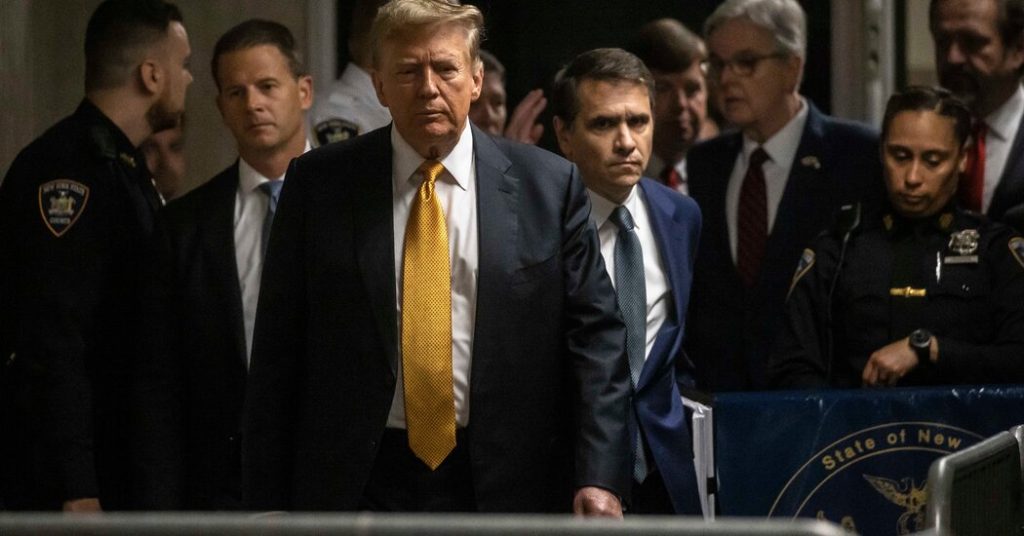The jury heard Donald J. Trump’s voice, saw his tweets, and watched footage of him campaigning for the presidency, during his criminal trial. Despite Mr. Trump’s desire to testify, he ultimately decided not to take the stand, allowing the defense to rest its case without his testimony. Prosecutors had accused Mr. Trump of covering up sex scandals to aid in his election to the presidency, leading to 34 felony counts against him. The prosecution’s star witness was Michael D. Cohen, Mr. Trump’s former lawyer, who testified that Mr. Trump reimbursed him for hush money paid to porn star Stormy Daniels.
Mr. Cohen’s testimony was crucial in linking Mr. Trump to the falsifying of business records at the center of the case. Despite not testifying in court, the jury was presented with video footage of Mr. Trump’s remarks, tweets, and quotes from his books. The defense called two witnesses, including Robert J. Costello, a lawyer who sought to attack Mr. Cohen’s credibility. The trial featured tense exchanges between Mr. Costello and the prosecution, with accusations that he was trying to prevent Mr. Cohen from cooperating with investigators.
The defense and prosecution presented opposing visions for jury instructions, with prosecutors arguing for more flexibility in determining Mr. Trump’s role in creating false records. Defense lawyers wanted more specific requirements for a guilty verdict, focusing on proving that Mr. Trump falsified records to conceal an unlawful election conspiracy. The judge, Juan M. Merchan, expressed reluctance to change the law for this case and indicated that he would carefully consider arguments from both sides before making a decision on jury instructions.
Throughout the trial, Mr. Trump’s decision not to testify loomed large, as he remained the only American president to face a criminal trial. The defense strategy focused on attacking the credibility of the prosecution’s key witness, Mr. Cohen, who had turned against his former mentor. Despite Mr. Trump’s absence on the stand, the jury had ample exposure to his words and actions, which were presented as evidence of his involvement in the alleged cover-up. As the trial concluded, the jury prepared to deliberate on the 34 felony counts against Mr. Trump, determining his fate as a potentially convicted felon.


